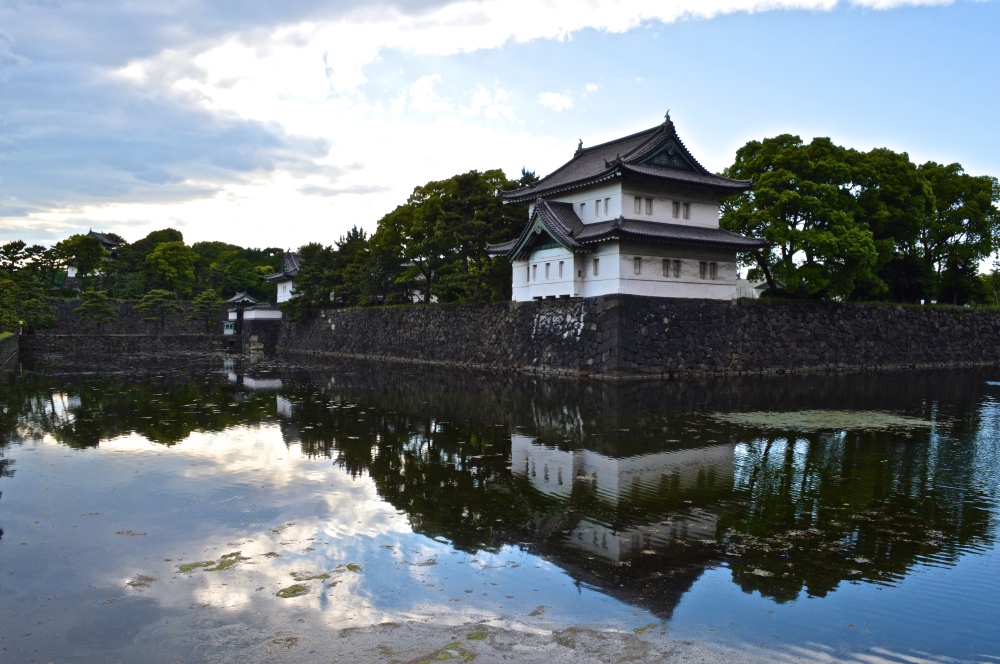As I left the Marunouchi exit of Tokyo station, I was warmly greeted by an array of glistening skyscrapers. This took me by surprise as my imagination painted the journey to the Imperial Palace of Japan much less wetsernised. The roads were ofcourse spotless and wide, however it was suprisingly scarce, when considering Tokyo is the most populous city on earth.
Wandering the extensive streets I repeatedly cross referenced the map as the possibility of being lost loomed.. Surely I wasn’t going to find the home of the oldest continuous hereditary monarchy in the world nestled between the Mistibushi HQ and a Mcdonalds?
Nevertheless I went with my gut instinct and through perseverence I stumbled upon the outer moat of Edo castle. In the partial words of bugs bunny – of course you know, this means war! I was very close!*

To throw a little bit of history into the mix, the Imperial family of Japan moved from the old capital of Kyoto to Tokyo after the fall of the Tokogawa Shogunate in 1868. A new palace was constructed upon the site of the legendary Edo castle in 1888. I say legendary because in it’s heyday, Edo castle was the largest fortress in the world! Despite losing it’s identity post Meiji restoration and being mostly destroyed during World War 2, the prominent double moat, walls and ramparts remain ever-present.
Arriving at Kokyo Gaien (the large plaza in front of the Imperial Palace), I was admittedly a little disappointed due to my ridiculous expectations of actually seeing the edifice itself. The reality is that this is only possible on December 23rd (Emporer’s birthday) and January 2nd (New Years greeting), where on both occasions the Imperial family make a rare appearance in typical balcony fashion.
As a visitor you’re invited to let your mind wonder what lies beyond ‘the most photographed scene in Japan’ – Nijubashi (Double Bridge). Comprised of 2 iconic bridges, first stone then iron, they form a beautiful entrance to the inner palace grounds. The stone bridge in front is what the locals call Meganebashi (Eyeglass bridge), which hopefully from the photographs below becomes clear. The second iron bridge was formely wooden and consisted of two levels, from which the original name Nijubashi is derived.














